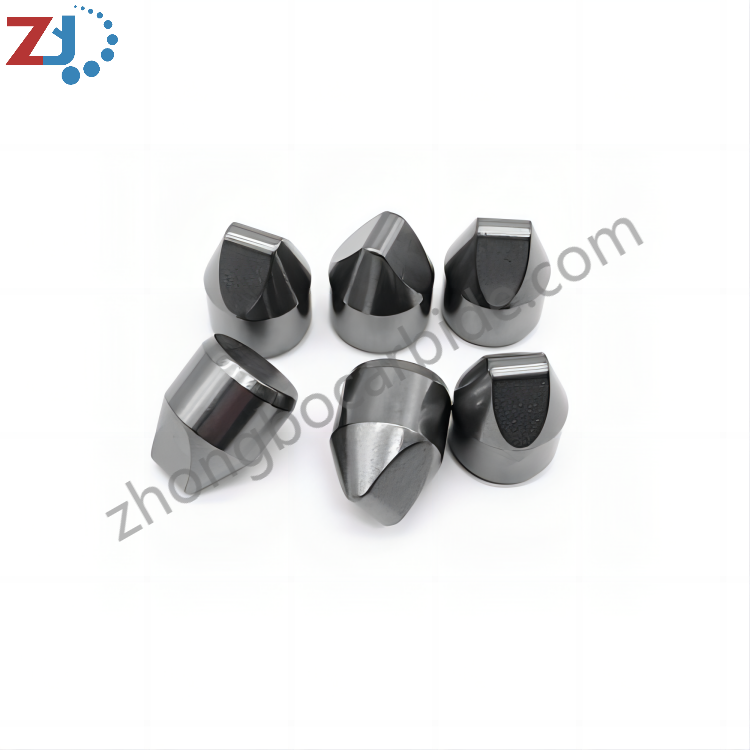Carbide buttons, also known as tungsten carbide inserts, have emerged as indispensable tools in various industries due to their exceptional hardness, wear resistance, and versatility. From mining drilling to tunneling and beyond, carbide buttons play a crucial role in facilitating efficient and precise material removal processes. In this comprehensive guide, we'll explore the different types of carbide buttons available and their wide-ranging applications across diverse industries.
Understanding Carbide Buttons
Carbide buttons are small cutting tools made from a combination of tungsten carbide particles and a binding material such as cobalt. This unique composition results in a material that is extremely hard, wear-resistant, and capable of withstanding high temperatures and extreme forces during cutting and drilling operations.
Carbide buttons typically feature sharp cutting edges and specialized geometries tailored to specific drilling and cutting applications. They are commonly used in drilling tools, milling cutters, and other cutting implements to facilitate efficient material removal across various materials, including rock, concrete, and metal.
Types of Carbide Buttons
1.Spherical Carbide Buttons
Spherical carbide buttons are characterized by their rounded shape and smooth surface, which allows for uniform wear distribution and enhanced drilling performance. These buttons are commonly used in mining drilling applications, where they are mounted on drill bits to penetrate rock formations and extract minerals efficiently.
Spherical carbide buttons are designed to withstand the abrasive nature of rock drilling and maintain their cutting edges for extended periods, resulting in increased drilling speeds and reduced downtime. Their spherical shape also facilitates effective chip evacuation, minimizing the risk of bit clogging and improving overall drilling efficiency.
2.Conical Carbide Buttons
Conical carbide buttons feature a tapered shape with a pointed tip, which allows for increased penetration and improved cutting performance in hard rock formations. These buttons are commonly used in tunneling and excavation applications, where they are mounted on tunnel boring machines (TBMs) and roadheaders to cut through rock and soil with precision and efficiency.
Conical carbide buttons are engineered to withstand high impact forces and maintain sharp cutting edges even in the most challenging tunneling conditions. Their tapered geometry allows for deeper penetration into rock formations, resulting in faster excavation rates and reduced project timelines.
3.Chisel Carbide Buttons
Chisel carbide buttons are characterized by their flat, chisel-like shape, which provides increased stability and cutting efficiency in softer rock formations. These buttons are commonly used in foundation drilling, piling, and quarrying applications, where they are mounted on drill bits to break up and remove rock and aggregate materials.
Chisel carbide buttons are designed to deliver powerful impact forces while maintaining precise control over drilling depth and direction. Their flat cutting edges ensure optimal contact with the rock surface, resulting in efficient material removal and minimized tool wear.

Applications of Carbide Buttons
1.Mining Drilling
Carbide buttons play a critical role in mining drilling operations, where they are used to penetrate rock formations and extract valuable minerals such as coal, iron ore, and copper. Spherical carbide buttons mounted on drill bits facilitate efficient rock penetration and material removal, allowing mining companies to extract ore with minimal downtime and increased productivity.
In addition to surface mining, carbide buttons are also used in underground mining applications, where they enable miners to access mineral deposits safely and efficiently. Whether drilling blast holes, ventilation shafts, or exploration boreholes, carbide buttons for mining drilling provide reliable performance and extended tool life in harsh mining environments.
2.Tunneling and Excavation
Carbide buttons are essential components of tunnel boring machines (TBMs) and roadheaders used in tunneling and excavation projects worldwide. Conical carbide buttons mounted on cutting heads allow TBMs to cut through rock and soil with precision and speed, facilitating the construction of tunnels for transportation, utilities, and mining purposes.
In urban environments, carbide buttons for tunneling enable contractors to excavate underground infrastructure safely and efficiently, minimizing disruptions to surface traffic and buildings. Whether tunneling through hard rock or soft soil, carbide buttons provide the cutting power and durability needed to complete tunneling projects on time and within budget.
3.Foundation Drilling and Piling
Carbide buttons are commonly used in foundation drilling and piling applications, where they are mounted on augers and drill bits to penetrate soil and rock formations for construction purposes. Chisel carbide buttons are particularly effective in breaking up and removing rock and aggregate materials, allowing contractors to install foundations, footings, and retaining walls with precision and efficiency.
In bridge construction, building foundations, and infrastructure projects, carbide buttons for foundation drilling ensure stable and secure structures by providing reliable drilling performance and consistent hole quality. Whether drilling in urban or rural environments, carbide buttons help construction crews overcome challenging ground conditions and complete projects safely and on schedule.
Conclusion
In conclusion, carbide buttons are versatile cutting tools that find widespread applications in mining, tunneling, construction, and other industries requiring efficient material removal processes. Whether drilling through rock, soil, or concrete, carbide buttons provide the cutting power, durability, and precision needed to tackle the toughest drilling and cutting challenges.
With their exceptional hardness, wear resistance, and versatility, carbide buttons continue to drive innovation and excellence in modern drilling and excavation technologies. By enabling faster drilling speeds, reduced downtime, and increased productivity, carbide buttons help companies and contractors optimize their operations and achieve greater success in their projects.




















